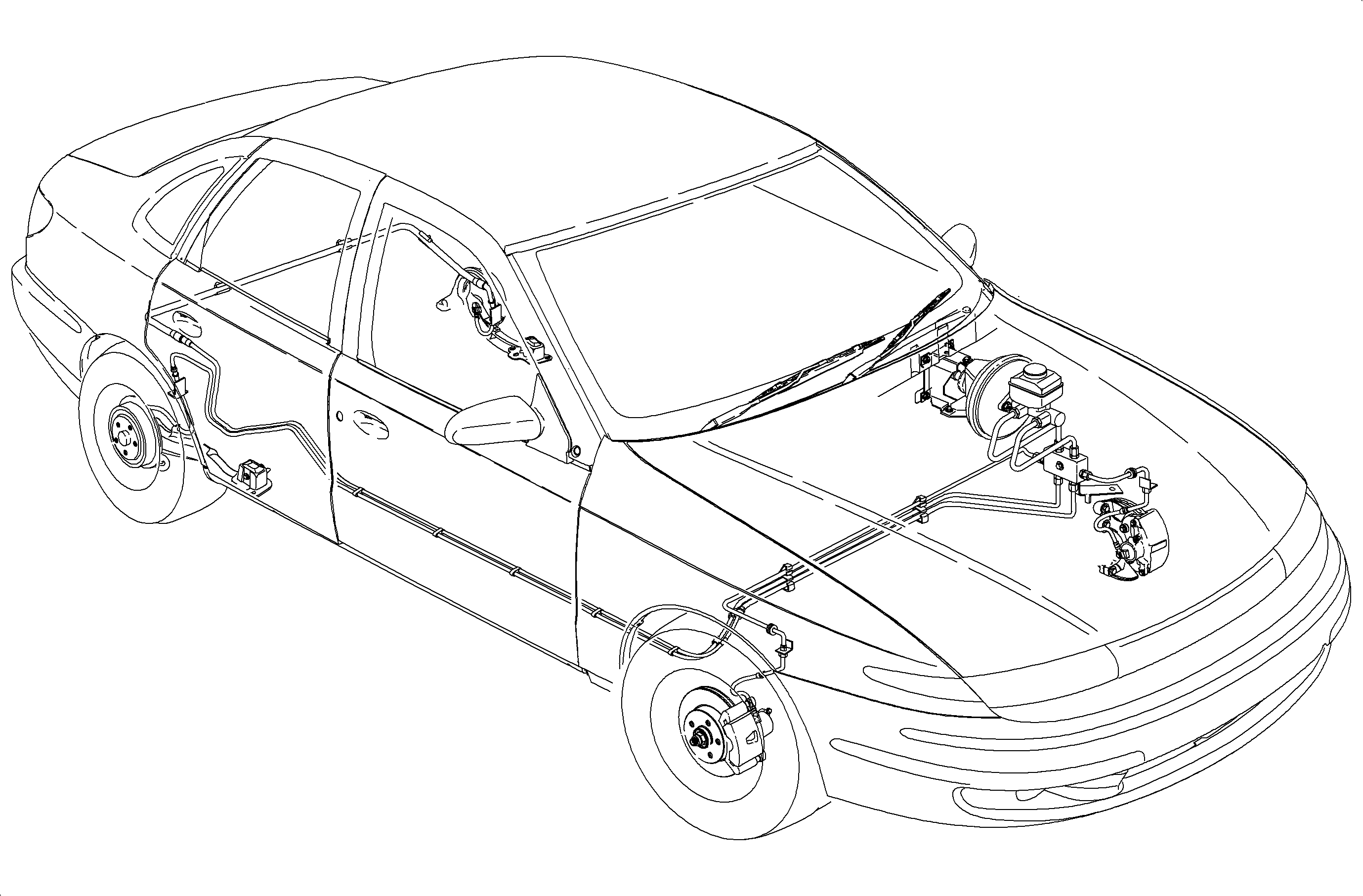Conventional Brakes

Three braking systems are available for Saturn vehicles. The conventional (base) brake system consists of front disc brakes and rear drum brakes, with power assist. Optional on certain Saturn models is an antilock brake system (ABS), equipped with either front and rear disc brakes and power assist or with front disc brakes and rear drum brakes and power assist. This section concerns itself with the conventional brake system.
The following descriptions explain the operation of the components used on the conventional brake system.
Master Cylinder
The master cylinder is a dual circuit unit designed for use in diagonally split hydraulic systems. With a diagonally split system, the left front and right rear brake are on one hydraulic circuit, while the right front and left rear are on the other.
Threaded into the rear brake lines are integral brake proportioning valves, which limit fluid pressure to the rear brakes after a predetermined rear brake pressure has been reached. These valves are used to minimize the occurrence of rear wheel lock-up when brakes are applied and vehicle is lightly loaded in the rear.
A brake fluid level switch, located in the brake fluid reservoir (attached to the master cylinder), is also provided. The switch will activate the RED BRAKE telltale lamp (located on instrument panel) should the brake fluid level become low. After the brake fluid level is corrected and a moderately high brake pedal force is applied, the RED BRAKE telltale lamp should go Off.
Vacuum Booster
The vacuum booster is a single diaphragm vacuum suspended unit. Engine vacuum is provided to vacuum booster through a hose and a vacuum check valve. The one-way check valve is provided between engine and the booster to prevent a loss of booster vacuum when engine vacuum falls below that stored in booster. When brakes are not applied, internal valves within the booster provide vacuum to both sides of diaphragm. When brakes are applied, air at atmospheric pressure is applied to one side of the diaphragm. Since a higher pressure now exists on one side of diaphragm than the other, a force is created, assisting brake application.
Front Caliper
Front calipers are single piston, sliding caliper units. They are fastened to the caliper support with two bolts. Brake pressure, created in the master cylinder, acts equally on the caliper piston and caliper body (in the bottom of the caliper bore). This causes the piston to move outward (pushing inboard brake pad against the brake rotor) and caliper body to slide inward (pushing outboard brake pad against brake rotor), creating stopping force. The front calipers are serviceable to the extent that they can be disassembled, cleaned, and fitted with new seals. However, since the piston bore cannot be honed, if extensive bore damage is present, the caliper body must be replaced.
Rear Drum Brake Assembly
The drum brake assembly is a leading/trailing shoe design. When the brakes are applied, the wheel cylinder moves both shoes out to contact the drum. With forward wheel rotation, the leading brake shoe provides the majority of the braking force, since it is self-energized (meaning that drum rotation draws the brake shoe into the drum). With reverse wheel rotation, the trailing brake shoe is self energized. Force from the brake shoes is transferred through the shoe anchor, the backing plate, the axle flange, and finally to the wheels. Brake adjustment is automatic, on any brake application. With leading/trailing brakes, it is normal for the leading (front) shoe to wear at a faster rate than the trailing (rear) shoe.
Rear Caliper
Rear calipers are dual piston, fixed caliper units. They are fastened to the knuckle with two bolts. Brake pressure, created in the master cylinder, acts equally on the caliper pistons. This causes the pistons to move outward (pushing the inboard and outboard brake pads against the rotor), creating stopping force. The rear calipers are serviceable to the extent that they can be disassembled, cleaned, and fitted with new seals. However, since the piston bore cannot be honed, if extensive bore damage is present, the caliper body must be replaced.
